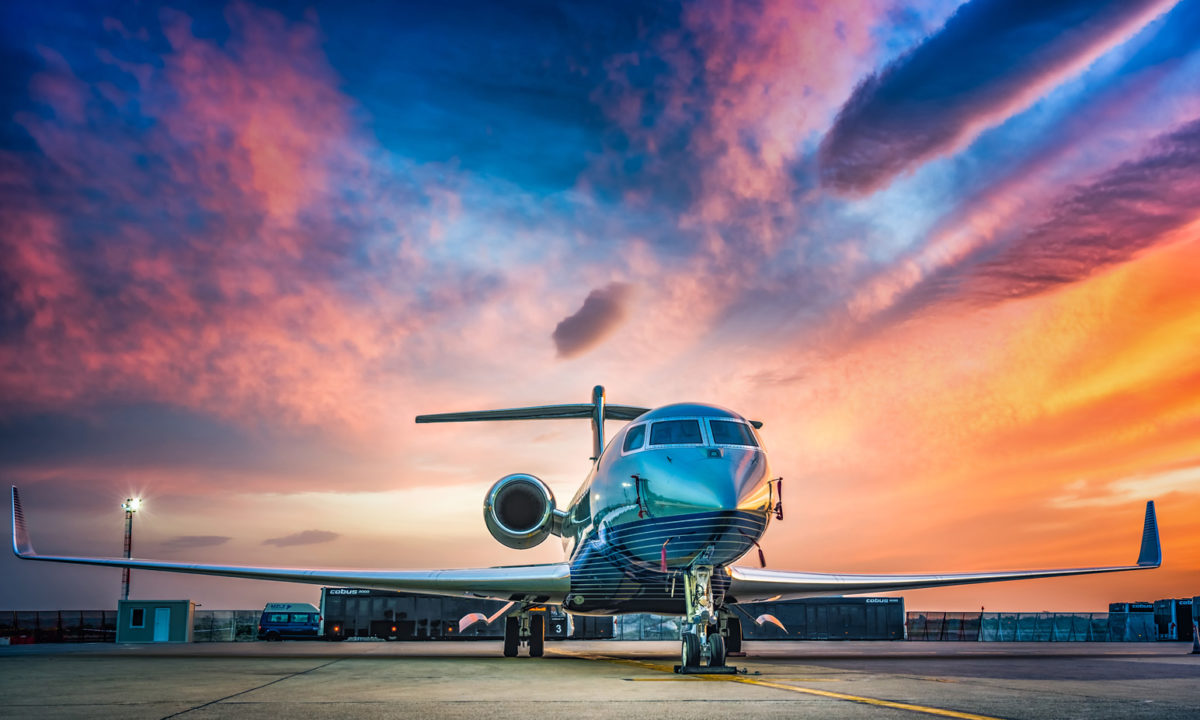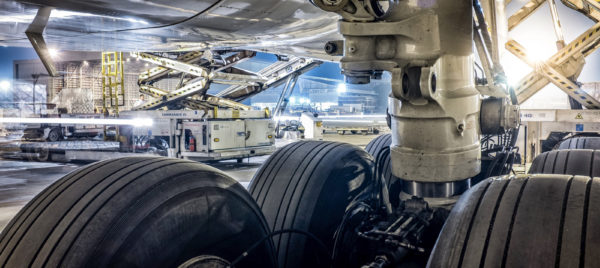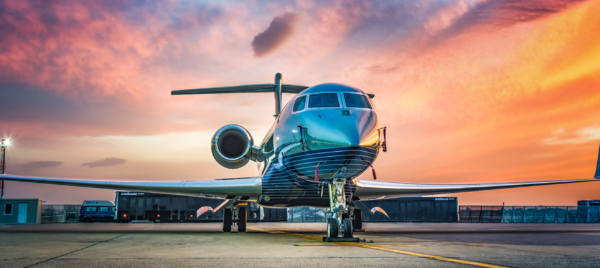MRO Management – MRO IN MOTION
World Aero’s CEO, Phil Randell, talks to features editor, Melissa Moody, as she explores the dynamic world of aircraft wheels and brakes and the work that goes into keeping them turning.
July 2021: download a PDF of the article
Essential for both getting aircraft into the air and setting down safely, it is imperative that the wheels and brakes on aircraft are maintained to the highest standard. Usually considered as relatively simple, high-volume work, based on overhaul rather than repair, they can be seen as some of the most predictable of an airline’s maintenance items.
Ironically, brakes tend not to break, but they do wear with use. The majority of brake maintenance is overhaul and the associated replacement of components that wear naturally every time braking is employed.
And despite what people may think, it’s not just about take-offs and landings when discussing wheels and brakes.
The bigger picture
Wheels are likely to suffer corrosion or damage and they should not be confused with tyres, although because of the nature of the component there is a necessary degree of overlap.
Like brakes, tyres wear naturally in use and a wheel may be removed and its tyre replaced a few times – typically between four and six, depending on aircraft type – before the wheel requires overhaul, assuming no issues are identified during the basic inspection that accompanies an intermediate tyre change.
World Aero CEO Phil Randell explains that it is “critical” to fully understand the maintenance cycle of minor and major inspections. This is “to ensure that airworthiness is maintained at all times and also to protect against costly mistakes, such as unnoticed corrosion, which can result in a high number of irreparable units,” he says – a factor which many airlines will look to avoid, particularly in the current climate.
Seasonal changes also have a “huge” impact on shop inputs, Randell adds. “A typical northern hemisphere summer, for example, will see increased holiday traffic boosting flights and thus wheel and brake removals. Also hot runways, heavier aircraft or tighter turnarounds reduce the life of the tyres and, to a lesser extent, the brakes.”
He also notes that different routes can have a “heavy impact” on removals; runway conditions and manoeuvring area dimensions can make one route’s tyre consumption “vastly different” from another. “An aircraft that operates tight schedules into inner city airports with very compact ramp areas will see far less tread life than those operating into larger airports,” Randell says.
Chicago-headquartered MRO company AAR agrees that the maintenance landscape is about more than just the components themselves. The company’s director of wheel & brakes, German ‘Alex’ Lara, says that following the CMM and manufacturer’s recommendation is best practice when looking at maintenance and will ensure a safe and long life of the product, but the MRO should also work with the airline and its schedules to allow both sides to work effectively. “It is important that the repair facility is in sync with the airline’s maintenance and quality procedures to ensure a reliable programme,” Lara says. “Understanding the day-to-day operation of the airline and their requirements is essential in maintaining sufficient stock levels to accommodate their operation.”
One of aftermarket supplier TP Aerospace’s strengths when it comes to wheels and brakes is its levels of backstock. Owning more than 20,000 of the component, in addition to structural parts and tyres, it claims to have “by far the largest aftermarket inventory for commercial aircraft in the world”, according to global programs director Philip Broskov Hansen. For its MRO services, TP Aerospace’s aim is to keep everything as simple as possible for both sides. “We want to make it as transparent and as predictable in terms of managing the cost of wheels and brakes as possible,” he explains – which is where cost planning programmes come in.
According to Hansen, airlines are looking into their costs in a specific way to see if any processes or operations can be done smarter or simpler. TP Aerospace’s programmes respond to this trend and have enabled the company to manage through the pandemic. Now, as flights are restarting, Hansen says the company stands ready to help, particularly if wheels haven’t been maintained during storage.
Similarly to TP, looking at the wider impact of the component and its effect on the airline, Lufthansa Technik uses a charge per cycle rate to cover the cost of operation per flight. “The Covid-19 crisis has not changed this approach in the market much for our customers,” says senior manager key accounts, wheels and brakes David Kahl. He points out that smaller customers may look to have more flexibility when ramping up, thus opting for single event pricing; however, there comes a point when the flight cycle pricing becomes more attractive to customers.
The MRO giant has also specialised in pooling for customers, providing leasable stock for airlines to use. It allows them to lower their initial asset investment, a choice that has “become more attractive since airlines have been managing their bottom line. We can provide stock from regional to large commercial airliners within a week,” Kahl adds.
Moving ahead
As with every other aspect of aviation, the wheels and brakes market has been impacted by the Covid-19 pandemic.
Hansen explains that if airlines “haven’t taken care of the aircraft in the proper way by rotating them and instead keeping them parked you would need to change out a lot of wheels and potentially brakes ready for the aircraft to fly again, which is something we see happening.”
Meanwhile, Lufthansa Technik has found that airlines have been looking to find solutions on how to deal with storage and de-storage requirements, which typically include protection against the elements with subsequent removal of wheels after several months of parking. “The cost of removal is the pain point which airlines are looking to manage with rotation of their fleet or stringent long-term parking,” Kahl notes. “In essence: avoid removal and cost generation wherever possible.”
In terms of brakes, the MRO has seen an increase on oxidation on parts – from structural housings to partial oxidation on carbon heatsinks. Kahl says MRO shops have seen a “significant reduction” on the removals.
The aftermarket for parts has changed too. Parts which once were rare or expensive can now be procured in abundance at low rates with even OEMs offering significant, double-digit discounts on the parts, Kahl says – a state of affairs which isn’t expected to change until markets operate above pre-pandemic levels.
Prior to the Covid-19 crisis, AAR’s Lara felt that the primary driving force behind wheels and brakes was the increase in the number of aircraft in recent years. That demand is still expected as the market picks back up as economies grow, and there will be an increase in demand among the middle-class emerging markets.
For some wheel and brake MROs, demand has remained consistent as schedules remain largely unchanged. Some customers have understandably had volumes decrease as aircraft were grounded, but others, such as cargo carriers, have seen an rise in volume as global cargo demand increased.
But some wheel and brake shops haven’t been so lucky, points out Lara. “As commercial flights came to a near halt, so did the repairs of wheels and brakes. Many small wheel and brake shops had to close their doors. Those shops with a diversified customer base did better due to the increase in the cargo sector.”
Ultimately, “it all comes down to the dollars and cents”, according to Hansen, “particularly in such a competitive market”. Where some companies used to be able to charge more because of their level of service, he points out that’s not so much the case anymore.
“We are really being challenged on processes and operators are going more thoroughly out in the market,” he says. “But sometimes it’s down to the facts. For example, one part might be 50 per cent cheaper than this other part, so we kind of have to keep a keen eye on the pricing.”
Steel vs carbon
The two main types of brakes, steel and carbon, both have their benefits and drawbacks, but carbon appears to be becoming the most favoured type among airlines.
The continued roll-out of carbon brakes is, in Randell’s opinion, the most significant innovation in recent times. “Not so long ago these items were exclusive to long-haul aircraft; now even the smallest commuter aircraft have them as options, or as standard,” he points out.
Kahl explains that a Boeing 737 steel brake used to last around 1,100 landings before removal, but this has now jumped to 2,000 landings with carbon brakes. Some aircraft types see this number move closer to 3,000 landings, resulting in lower maintenance costs and associated labour.
With ongoing retrofit programmes for common types, such as the 737NG, to replace steel brakes with carbon equipment (which also requires the replacement of main wheels), there is a rise in demand across the board. “The cost of the new components is high, and the value of the old equipment negligible, but OEMs are offering huge incentives to fit their equipment, such as free wheels and brakes for an entire fleet,” reports Randell.
According to World Aero, while the repair cost of carbon brakes is considerably higher than steel types, the longer on-wing time brings “significant savings” in operator manpower for brake changes, the logistics of routing units to and from overhaul, spares holding levels and administration.
There is also the reduced fuel burn due to lower brake weight, although this is less of a factor for short-haul high-cycle operators. Randell says it is the long-term operating cost benefits that need to be understood, not the initial costs of retrofitting.
But it’s not necessarily up to the MRO to have the final opinion, according to Hansen. “As the MRO provider we have everything in stock, so we’ll leave it up to operators to decide what’s best for their operation and give pointers,” he says.
Lara adds that the idea of more electric components is also becoming popular, as seen by the carbon electric brakes introduced in the 787 and now the A220. “Most brakes are powered by the aircraft’s hydraulic system in conjunction with pistons and cylinders. Electric brakes are powered by the aircraft electric system and this force is transferred to the heat sink through electromechanical actuators, which are housed in the piston housing.”
Kahl agrees. “[Electric brakes] will allow for further cost saving on the operator side as certain line items may exchange on ship which previously necessitated the removal of the complete brake for repair,” he says. “However, this is very much in its infancy and will only breakthrough in the next generation of aircraft due in the 2030s.”
Keeping positive
One of the biggest issues for the industry, and the resulting market, is the uncertainty surrounding travel.
“There is no doubt there’s significant demand for leisure travel, but this is very much controlled by changing restrictions on where and when people can travel and if there is a need for quarantine,” comments Randell. “This leaves airlines in the unenviable position of having to try and predict potential traffic volumes without much insight.”
He believes a slower market will be the case for the foreseeable future. “We aren’t expecting to return to pre-pandemic levels of servicing requirements for a further year, possibly even two,” he admits.
Hansen considers TP Aerospace lucky due to its mix of customers. The company hasn’t depended on passenger operators, and has been able to use freight operators to keep services up. Although it did have to implement some cost-cutting measures – something that was a “big wake-up call” – TP is starting to see positive trends in the market with customers who are preparing for wheels to start turning again.
AAR’s Lara notes that as aircraft are removed from storage and activated, flights have been slowly coming back to pre-Covid levels. “There has been a steady increase in the wheel and brake market, and this increase should continue as people feel confident about travelling and as countries begin to open their borders,” he concludes.
This feeds back into the MROs in the market, who for the first time in a year, can take a breath of fresh air.



